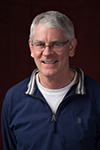
Professor
Materials Science & Engineering
Dane Morgan teams with John Booske to identify a promising candidate compound that could be used in next-generation vacuum electronic devices.
Full story by Sam Million-Weaver.

Dane Morgan teams with John Booske to identify a promising candidate compound that could be used in next-generation vacuum electronic devices.
Full story by Sam Million-Weaver.
 Discovery Fellows Rebecca Willett and Rob Nowak are creating algorithms to make sense of big data and help machines learn. Full story at wid.wisc.edu.
Discovery Fellows Rebecca Willett and Rob Nowak are creating algorithms to make sense of big data and help machines learn. Full story at wid.wisc.edu.
 “The computer models Nowak and his team are developing are called adaptive crowdsourcing algorithms. They attempt to weed out the weakest captions as quickly as possible to get more people to vote on the potential winners.”
“The computer models Nowak and his team are developing are called adaptive crowdsourcing algorithms. They attempt to weed out the weakest captions as quickly as possible to get more people to vote on the potential winners.”

Stephen J. Wright, George B. Dantzig Professor of Computer Sciences, works on theory and applications of mathematical optimization, a field that concerns itself with techniques for finding the best element (as measured by a mathematical function) from a large or infinite set of possible alternatives. Wright has served as chair of the Mathematical Optimization Society and three terms as a trustee of the Society for Industrial and Applied Mathematics. – See full article by Chris Barncard
 Jordan Ellenberg is the recipient of the 2016 Euler Book Prize for an outstanding book in mathematics.
Jordan Ellenberg is the recipient of the 2016 Euler Book Prize for an outstanding book in mathematics.
 The New Yorker is using a machine learning system developed by WID Optimization researchers to sort through captions for their weekly cartoon caption contest. See full story on wid.wisc.edu.
The New Yorker is using a machine learning system developed by WID Optimization researchers to sort through captions for their weekly cartoon caption contest. See full story on wid.wisc.edu.
Blue Sky Science: What is machine learning? from Morgridge Institute on Vimeo.
Rob Nowak lends his machine learning expertise to Morgridge Blue Sky Science Video.
 Mark Craven and David Page participate in Big Data project to study Alzheimers.
Mark Craven and David Page participate in Big Data project to study Alzheimers.
UW-Madison engineers including Rebecca Willett brought together colleagues from across the neuroscience spectrum to spark a more comprehensive discussion about the vast challenges and opportunities ahead for brain research and new neurological therapies.